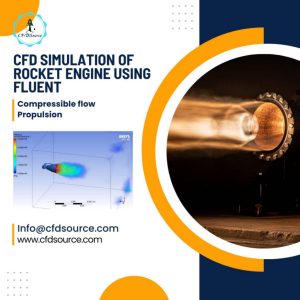The Strategic Dilemma: Navigating Your Organization’s CFD Capabilities
Making the call on your company’s CFD strategy is one of those decisions that echoes for years. It’s not just a technical choice; it’s a fundamental business decision that shapes how you innovate, how fast you move, and where you spend your capital. The In-House CFD Team vs. Outsourcing debate is less about which is “better” and more about which is right for your specific goals, right now. Forget the generic advice. Let’s get practical.
The core of this is about your product development cycle. CFD isn’t just a validation step at the end anymore. It’s a predictive tool that can guide design from the earliest stages. A poor choice here can mean delayed projects and blown budgets, while the right one can become your competitive edge. When you get it right, you’re not just running simulations; you’re making smarter, faster engineering decisions. That’s why considering a specialized [CFD outsourcing partnership] early on can be a game-changer for many teams.
Building Your Internal Prowess: The In-House CFD Team
The Foundation: Infrastructure, Talent Acquisition, and Continuous Training
Okay, let’s talk about building a team. After spending over a decade in this field, I’ve seen companies think it’s as simple as buying a few Ansys Fluent licenses and hiring a sharp PhD grad. That’s step one of about fifty.
You need the hardware—and not just a beefy workstation, but potentially a dedicated HPC cluster to handle complex, transient simulations. 💻 You need to find, hire, and retain talent that understands both the software and the underlying physics. This is harder than it sounds. A good CFD engineer is a rare breed. Then there’s the ongoing training to keep them sharp and the IT overhead to manage the whole ecosystem. Before you commit, it’s critical to have a realistic picture by [understanding the full cost breakdown] of both in-house and external options.
Advantages: Control, IP Protection, and Deep Integration
The biggest arguments for an in-house team are powerful: control and integration. Your team lives and breathes your products. They’re in the design meetings, they understand the company culture, and their knowledge builds organically over time. There are no NDAs needed for hallway conversations. This tight integration can accelerate iterative design loops in a way that’s hard to replicate externally. Your IP stays firmly within your four walls, which is a non-negotiable for some organizations.
The Hidden Costs & Challenges: Beyond Salaries and Software Licenses
The salary of a CFD engineer and the cost of a software license are just the tip of the iceberg. The real costs are often hidden and can catch managers by surprise. We’re talking about the things that don’t show up on the initial budget request.
| Visible Costs | Hidden (and often larger) Costs |
| Engineer Salaries & Benefits | Recruitment & Onboarding Time/Fees |
| Software License Fees (Annual) | High-Performance Computing (HPC) Hardware & Maintenance |
| Workstation Hardware | IT Support Overhead for Specialized Software/Hardware |
| Continuous Training & Conference Budgets | |
| Lost Opportunity Cost: Time spent by a small team on a problem a specialist could solve in half the time. | |
| Management Overhead: Time you spend managing the team, their projects, and their resources. |
These hidden costs add up quickly. A team of two can easily require a total investment far beyond what you initially projected. It’s crucial to map out these factors to avoid surprises and to understand why a transparent partner who outlines their [project workflow and costs upfront] can de-risk the entire process.
Gaining Expertise On-Demand: The Outsourcing CFD Model
Accessing a Global Pool of Specialized CFD Talent Without the Overhead
Now for the other side of the coin. What if your project needs a deep dive into multiphase flow for a new separator design, or a complex fluid-structure interaction (FSI) analysis for a flexible valve? Your in-house generalist might be brilliant, but they may not have the niche experince needed.
This is where outsourcing shines. You’re not just hiring a person; you’re tapping into a firm’s collective knowledge base. You get access to a specialist who has likely solved a similar problem ten times before, without the long-term commitment of a full-time hire. It’s a surgical approach—you bring in the exact expertise you need, for exactly as long as you need it.
Key Advantages: Flexibility, Scalability, and Cost-Efficiency
The business case for outsourcing often boils down to a few key benefits that directly address the challenges of an in-house team:
- Speed: Bypass the lengthy hiring and training process. A specialized firm can often start on your project within days, not months.
- Scalability: Need to run five major CFD projects this quarter and only one the next? Outsourcing allows you to scale your CFD capacity up or down on demand, matching your project pipeline perfectly. 📈
- Cost Model: You convert a large capital expenditure (CAPEX) and fixed operational expenditure (OPEX) into a predictable, project-based variable cost. This is often far more efficient, especially for companies that don’t need a full-time CFD team year-round.
- Access to Tools: A good consulting firm will have licenses for a whole suite of software (Ansys, STAR-CCM+, OpenFOAM, etc.) and the powerful hardware to run them, saving you that massive upfront investment.
Addressing Common Concerns: Ensuring Data Security (NDAs) and Quality (Validation Protocols)
So, what about security and trust? It’s the number one hesitation I hear from engineering managers. You’re handing over your “secret sauce”—your proprietary designs and R&D data. A Non-Disclosure Agreement (NDA) is the standard first step, and any serious firm will sign one without hesitation. But trust goes beyond a legal document. It’s about their professional process. How do they handle data? Are their systems secure? You should feel comfortable asking these direct questions.
Then there’s the question of quality. How do you know the results aren’t just pretty pictures? 🎨 This is where validation is everything. A competent CFD partner will always have a protocol for it. This could mean cross-referencing results with established experimental data, comparing to published academic research, or performing detailed mesh independence studies. If a potential partner can’t clearly explain their quality assurance process, that’s a major red flag.
The Critical Comparison: Metrics for CTOs & Engineering Managers
Quality Assurance & Validation: Guaranteeing Accurate and Reliable Simulation Results
Let’s dig a bit deeper into this validation idea because it’s where many projects fail. Getting a simulation to “converge” doesn’t mean the answer is correct. I once saw a team spend weeks on a simulation that produced beautiful, converged results that were off by 40% from the physical test because their boundary layer mesh (the y+ value) was completely wrong for the turbulence model they chose.
A reliable partner focuses on:
- Mesh Quality: Ensuring the mesh is fine enough in critical areas (like boundary layers or shockwave regions) without creating unnecessary computational cost.
- Physics-Based Sanity Checks: Do the results make physical sense? Are pressures, velocities, and temperatures within expected ranges?
- Comparative Analysis: The gold standard. Comparing simulation data against real-world test data or well-vetted empirical correlations. This is non-negotiable for mission-critical applications.
The Strategic Decision Framework: When to Build, When to Buy
Ideal Scenarios for Establishing an In-House CFD Capability
Building an in-house team makes perfect sense when CFD is a core, daily function of your R&D. If your team is constantly running similar types of analyses—say, tweaking the aerodynamics of a hundred slightly different designs—the investment can pay off. You have a constant workload, the problems are within a defined scope, and the deep integration with your design team is a massive advantage. This is about operational efficiency for high-volume, repetitive simulation work.
When Outsourcing Becomes the Strategic Imperative for Innovation & Efficiency
Outsourcing becomes the clear strategic choice when you face complexity, novelty, or fluctuating demand. For instance, you might be a pro at aerodynamics but suddenly need a [deep dive into electronics thermal analysis] for a new product line. Training your team for this one-off, highly specialized task is inefficient. ➡️ Outsourcing gives you instant access to that niche expertise. It’s also the smart move when you need to accelerate your R&D cycle for a critical product launch. Speed to market often trumps the desire for in-house control.
The Hybrid Model: A Balanced Approach to CFD Resource Management
For many larger organizations, the answer isn’t a simple “either/or.” It’s a hybrid approach. They maintain a small, agile in-house team for day-to-day analysis and routine design validation. This team acts as the “intelligent customer.”
Then, for the big, complex, or highly specialized projects, they bring in an external partner. This model gives you the best of both worlds: the integration and control of an in-house team, combined with the on-demand expertise and scalability of an external consultant. It’s a flexible and financially savvy way to manage your CFD resources.
Selecting Your External CFD Partner: A Guide to Due Diligence
H3: Key Criteria: Beyond Price – Expertise, Track Record, and Communication Protocol
Choosing a partner isn’t like buying a commodity. The lowest bidder is rarely the best choice. When you’re vetting a firm, look beyond their quote and focus on these areas:
- Demonstrated Expertise: Do they have case studies or examples of work in your specific industry?
- Communication: Are they responsive? Do they ask smart questions that challenge your assumptions? You want a partner, not an order-taker.
- Process Transparency: Can they clearly explain their workflow, from initial brief to final report?
- The Team: Who will actually be working on your project? Understanding [the benefits of a dedicated fluid dynamics consultant] means you value the person behind the software.
The CFDSource Advantage: Our Commitment to Precision, Confidentiality, and Collaborative Partnership
At CFDSource, we’ve built our reputation on being more than just a simulation service. We act as a seamless extension of your engineering team. Our approach is founded on a few core principles: rigorous validation against real-world data, an unwavering commitment to your data’s confidentiality, and a truly collaborative process. We believe our job is to provide not just data, but actionable insights that lead to better products. Our engineers bring a depth of industry-specific experince that goes beyond just running the software.
Your Path Forward: Making the Right Strategic Choice for Your Engineering Future
Ultimately, the choice between an in-house CFD team or outsourcing is a strategic one tied directly to your company’s goals, resources, and appetite for risk. There is no single correct answer, only the answer that is right for you. By weighing the factors of cost, speed, expertise, and scalability, you can build a CFD capability that doesn’t just solve problems—it drives innovation and gives you a powerful competitive edge in the market.


